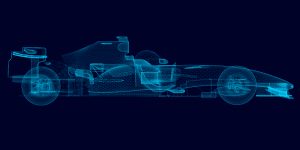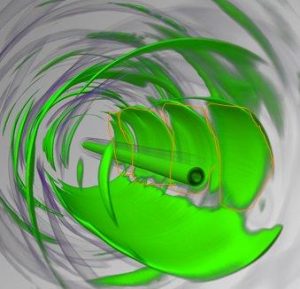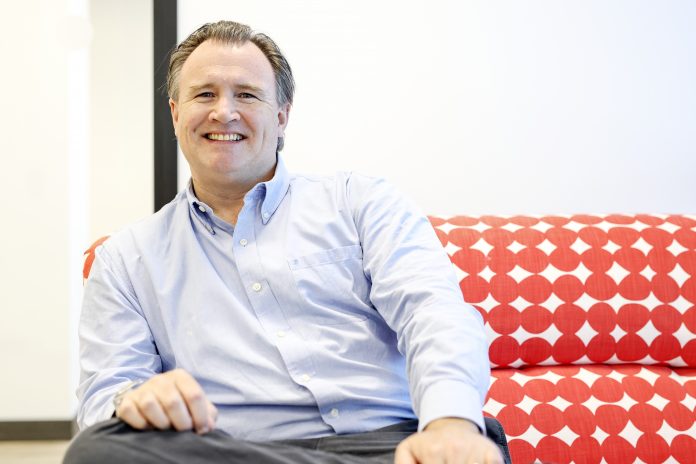Complementing BIM with digital twinning is an F1-inspired approach that can significantly improve the potential of construction projects. It requires a certain discipline, explains Patrick Lane-Nott, director of engineering at hyperTunnel
The construction industry lags somewhat behind automotive, motorsport and aerospace when it comes to digital twins. While we see some of the big technology players using digital twins in smart infrastructure and maintenance, in infrastructure design where there is most potential, contractors are still largely building to drawings manually, with no other input. Even where plans are detailed, they are interpreted differently and people tend to take a specific known method anyway, regardless of the model.
My own professional experience includes nearly 20 years in top-level motorsport, with time spent at Williams F1, Lotus F1, and most recently with McLaren Applied Technologies. I have spent many years working with the most advanced race car simulations, building digital twins for vehicle development and race strategy. In Formula 1, just as it should be in construction, absolutely everything you do has to come from the digital twin. In safety-critical environments, there is simply no room for personal judgement. To get the best from a digital twin requires effort and dedication to the cause, but ultimately you reap the rewards of your hard work.
Digital twins serve multiple purposes
It is important to understand that motor racing isn’t only about speed. One of the sport’s favourite sayings is, “To finish first, first you have to finish.” This acknowledges the fact that speed is ultimately meaningless unless it’s complemented by safety and reliability, two virtues essential in construction. Success in F1 also depends on other factors of importance in construction. I’ll share a few examples.
Creating an F1 car’s digital twin entails bringing together numerous digital twins, each representing a discrete section of the vehicle, such as the engine, chassis and bodywork, and each usually developed by a different department or supplier. The processes necessary to ensure flawless coordination between these various parties are transferable to construction, so that the building, tunnel or structure’s digital twin can be formed seamlessly, avoiding the oversights and mismatches which too often waste time and money on-site.
 Before going to the track for a race weekend, F1 teams prepare in great detail. Countless alternative car set-ups are evaluated (fine-tuning variables which affect the trade-off between straight-line speed and cornering performance) to ensure that when the car first goes on track, a strong start is made to the weekend’s continuous process of improvement. To achieve this, professional drivers will do thousands of laps of the circuit in a digital twin of the car on a driver-in-the-loop simulator.
Before going to the track for a race weekend, F1 teams prepare in great detail. Countless alternative car set-ups are evaluated (fine-tuning variables which affect the trade-off between straight-line speed and cornering performance) to ensure that when the car first goes on track, a strong start is made to the weekend’s continuous process of improvement. To achieve this, professional drivers will do thousands of laps of the circuit in a digital twin of the car on a driver-in-the-loop simulator.
It’s easy to imagine the parallel in tunnelling. Before construction begins, answers can be found to important questions such as what is the best construction method, in what order should key tasks be done, what happens if the supply chain gets interrupted for some unplanned reason during construction? What work can carry on without these parts? The digital twin can even be used to model more extreme scenarios like what happens in the tunnel during temperature or wind extremes or when the tunnel has to withstand that once-in-a-century storm, landslide or earthquake.
Because time is finite during a Formula 1 Grand Prix weekend, and time on track even more limited, another benefit of simulations is the ability to try out responses to every imaginable scenario before even turning a lap and even to test changes overnight between practice and qualifying sessions. This helps ensure the team has configurations and processes in place to deal quickly and effectively with whatever happens. This too has value in tunnel construction and excavation because the moment you arrive on-site the money-clock starts ticking.
There are also similarities between F1 racing and tunnelling when the asset – whether it’s an F1 car or a tunnel – is in operation. Data gathering by hundreds or thousands of sensors can help ensure that you fully understand how the asset is performing and that problems can be identified and solved promptly or pre-emptively. This is a crucial difference between BIM, in which the data is static, and digital twins, in which the data can be live and responded to in real-time.
The more data there is, of course, the more it must be prioritised. Whereas some data is useful seen live, much is best filed away for possible use when analysing long-term trends or tracing a problem back to its root cause. In F1, where data measures so many parameters so many times per lap, artificial intelligence and machine learning help determine which key information gets shown on a live dashboard. Again, this is something transferable to infrastructure, to improve efficiencies during construction and to enhance monitoring of the asset in operation, predicting both use and maintenance cycles.
F1 technology transfer
At hyperTunnel, we’re adopting approaches such as digital twins that have been developed to a highly sophisticated level in other sectors and integrating them into tunnelling and underground construction. The result is a radical new way of constructing, enlarging, repairing, and maintaining tunnels that use a combination of existing processes like horizontal directional drilling (HDD) and marrying them with new technology like the robotic delivery system developed in house to 3D-print the tunnel in the ground. This achieves projects faster, with less project risk and impact on the environment and is much more cost-effective than current methods.

To pull this off requires absolute precision backed up by a level of knowledge of the geology that simply hasn’t been available before in underground construction. It’s why building information modelling and digital twinning are at the very heart of the method and the digital twin dictates everything.
High-definition surveying and modelling techniques leverage all the standard data sources and then enhance the geological map with layer upon layer of additional data. This additional data is gathered using proprietary hyperTunnel technology, including digital underground surveying and robotics, to provide a uniquely detailed insight into the ground conditions that will be encountered during the tunnel build. By more accurately forecasting what lies ahead, it becomes possible to avoid unpleasant surprises and to bring an end to the wastefully expensive habit of over-specifying tunnelling machinery ‘just in case.’
The approach is currently being explored by Network Rail for repair work on the UK’s approximately 650 Victorian-era tunnels. It is hoped that hyperTunnel’s innovative solutions will help Network Rail require only minimal tunnel closures as they routinely repair ageing tunnels.
Digital twins and F1-inspired methodologies are going to be hugely significant in tunnelling and construction generally in the years to come. What architect or contractor wouldn’t welcome the opportunity to run their design phase simulations over and over again during the build process, allowing them to adapt as they go? Who wouldn’t want to remotely monitor their building or structure via a web-based dashboard with numerous parameters and alerts to check all the variables in real-time? Just like a race car!

















